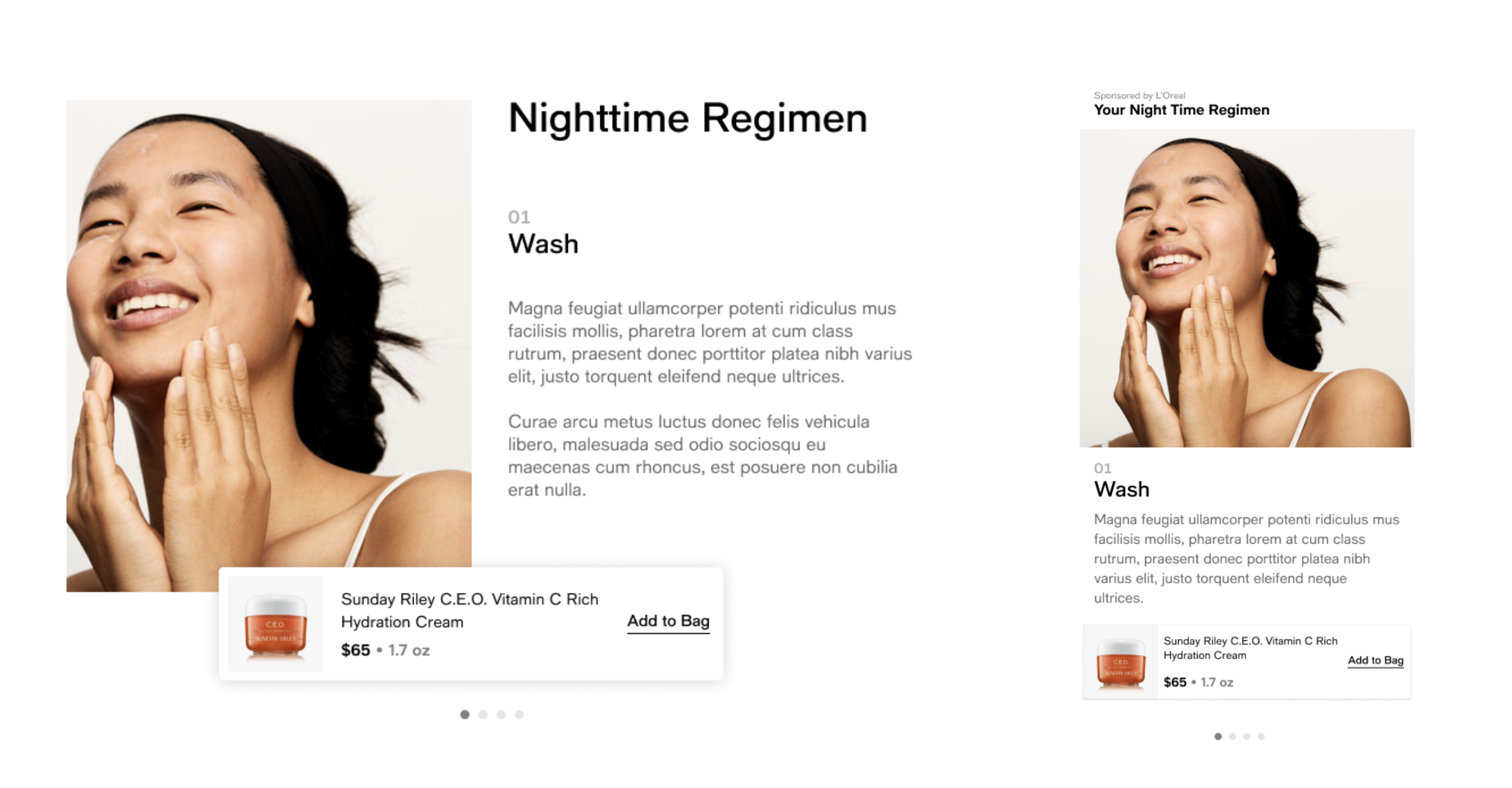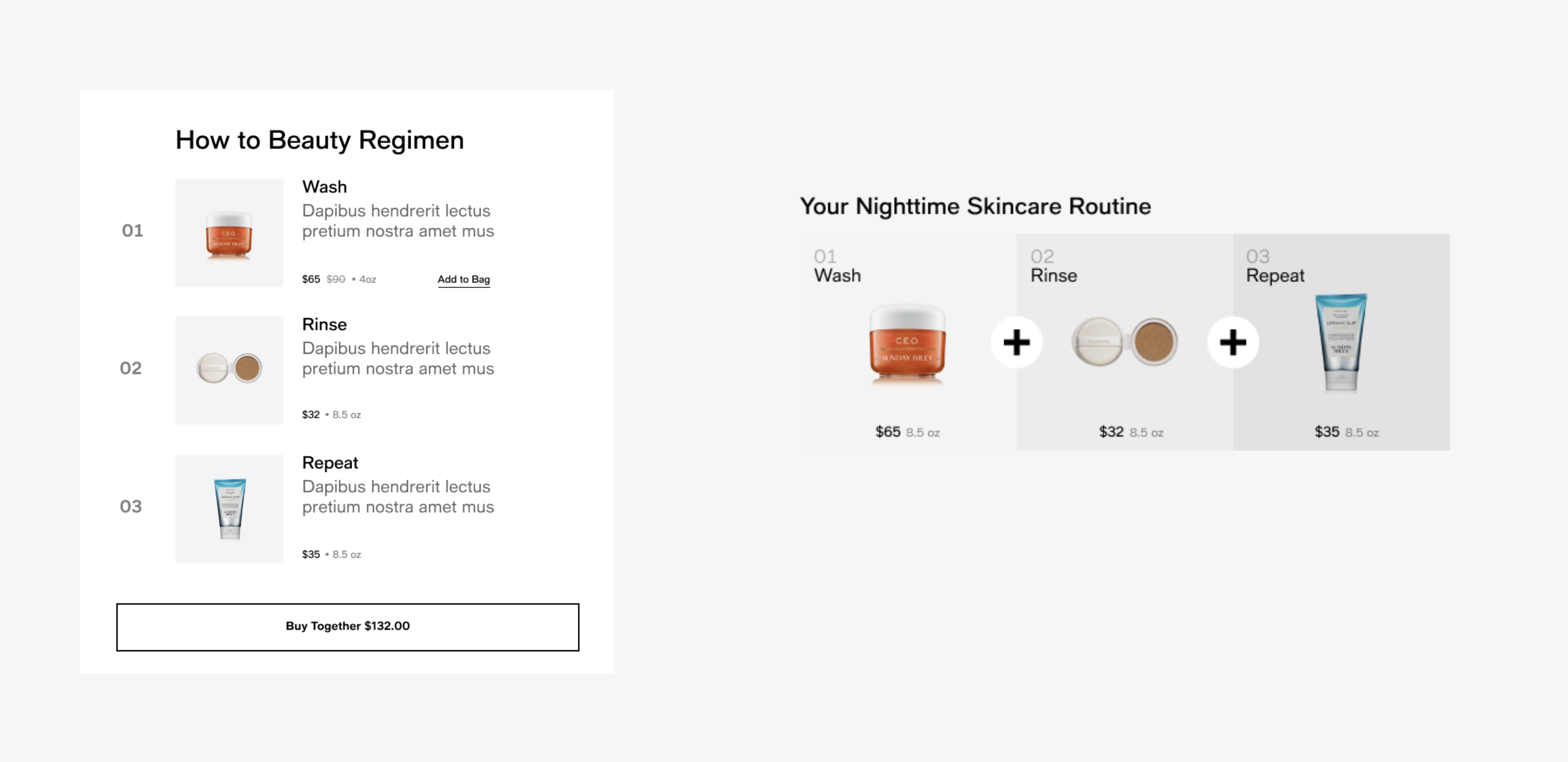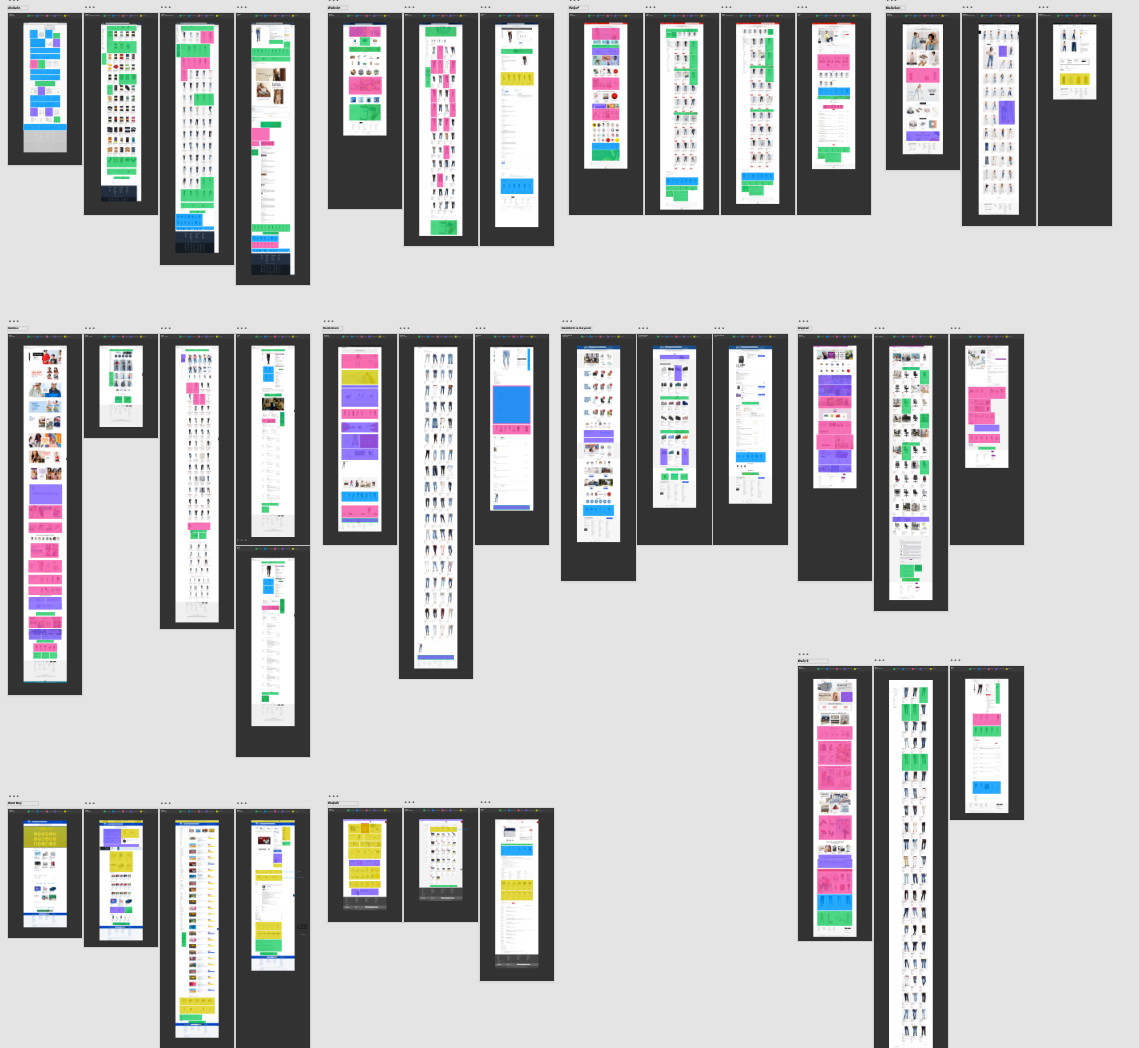
Process
Discovery
We conducted a competitive audit of how ads were implemented across retail sites.


From that, we identified five distinct zones across funnels:
Monetization
Personalization
Inspiration
Store Messaging
Marketing
Establishing Tenets
We created guiding principles to define when and where ad placements make sense. Our goal was to ensure each ad—regardless of type or density—was backed by user research and business rationale.

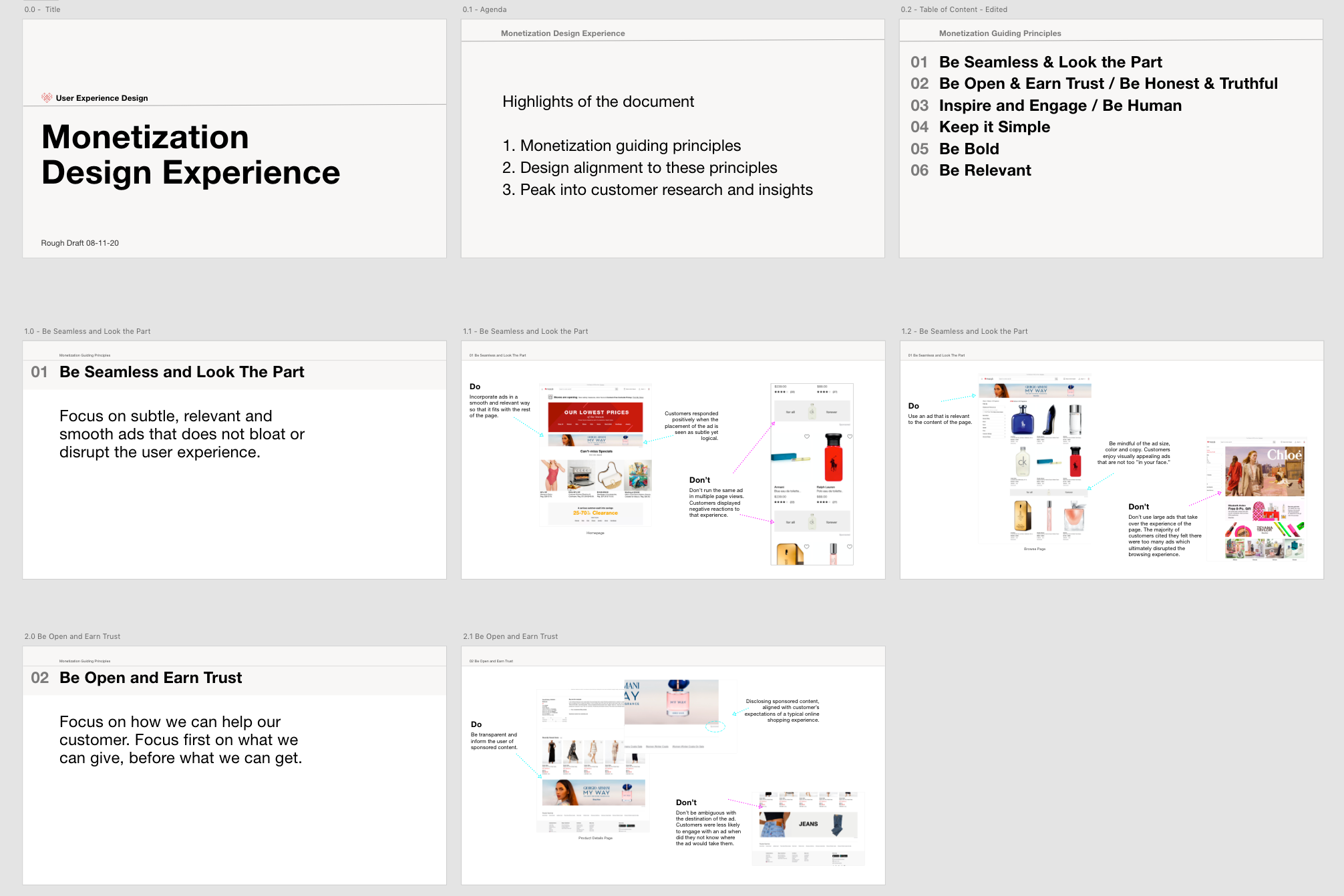
Testing
We created a testing schalso tested density thresholds across device types to find the right balance between monetization and usability—evaluating how many ads could appear on a page before user experience started to decline
Ensuring each placement was backed by research and thoughtfully integrated.
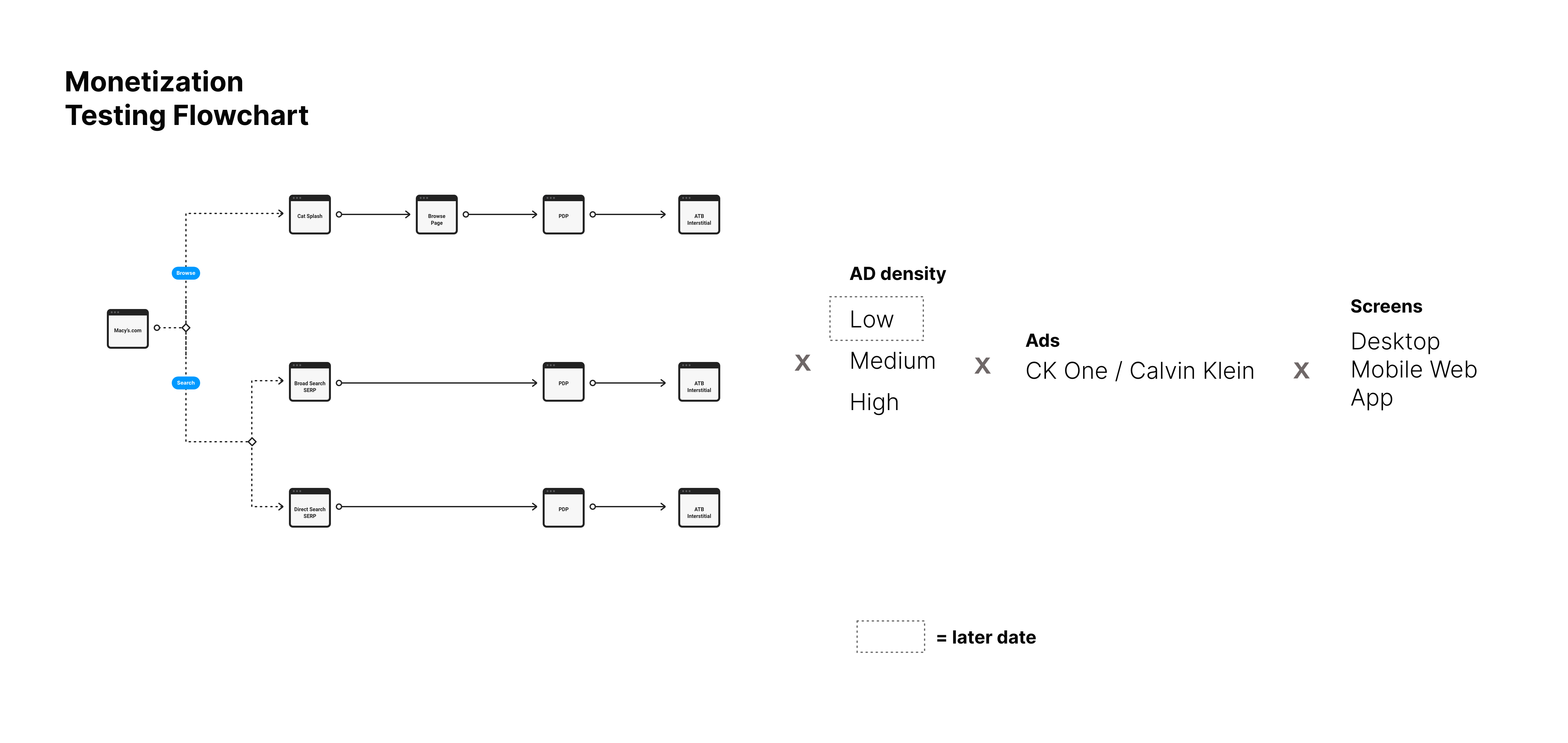
Ad Placement Solutions
Given the urgency, we quickly designed and tested ad placements that included traditional banner ads...
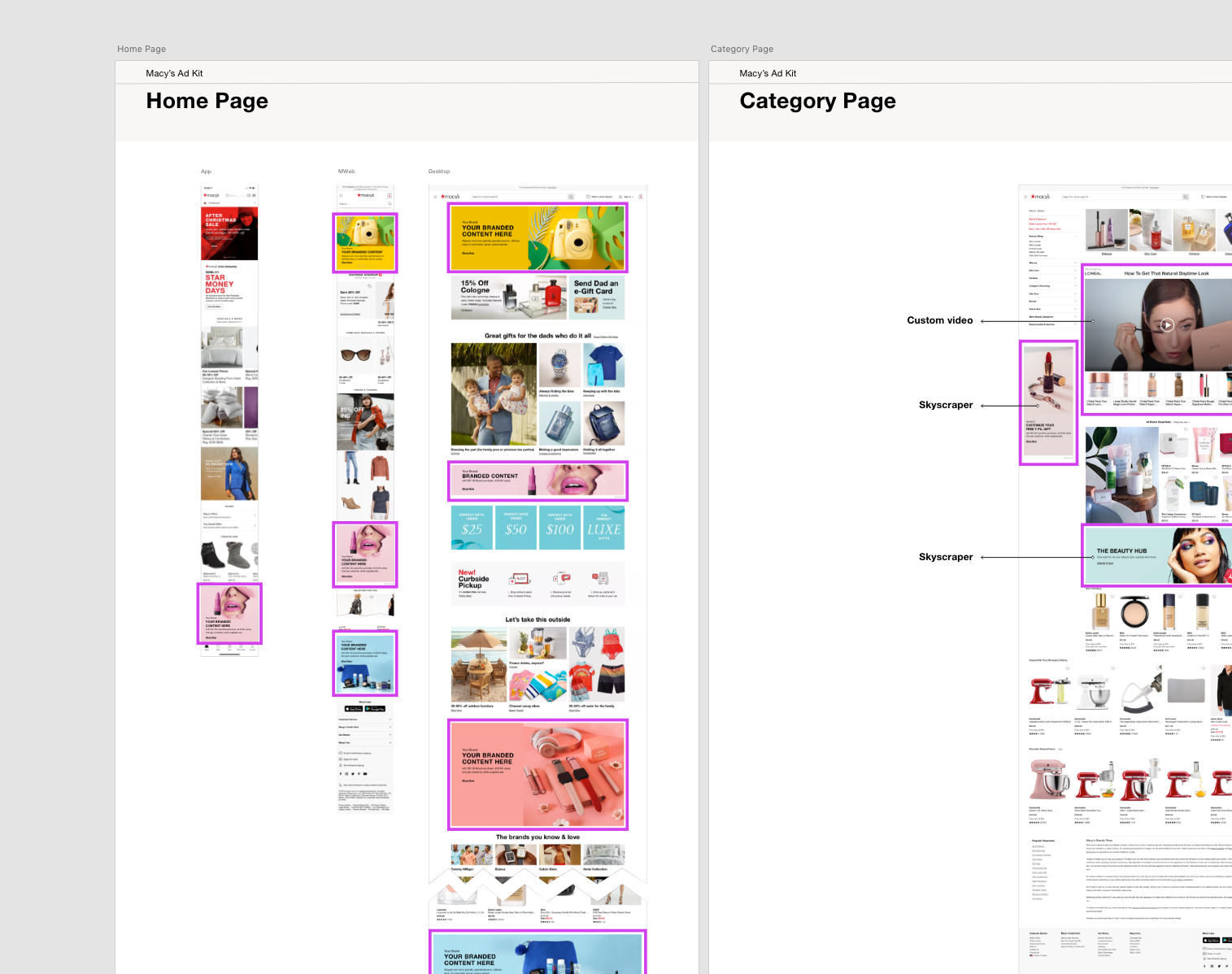
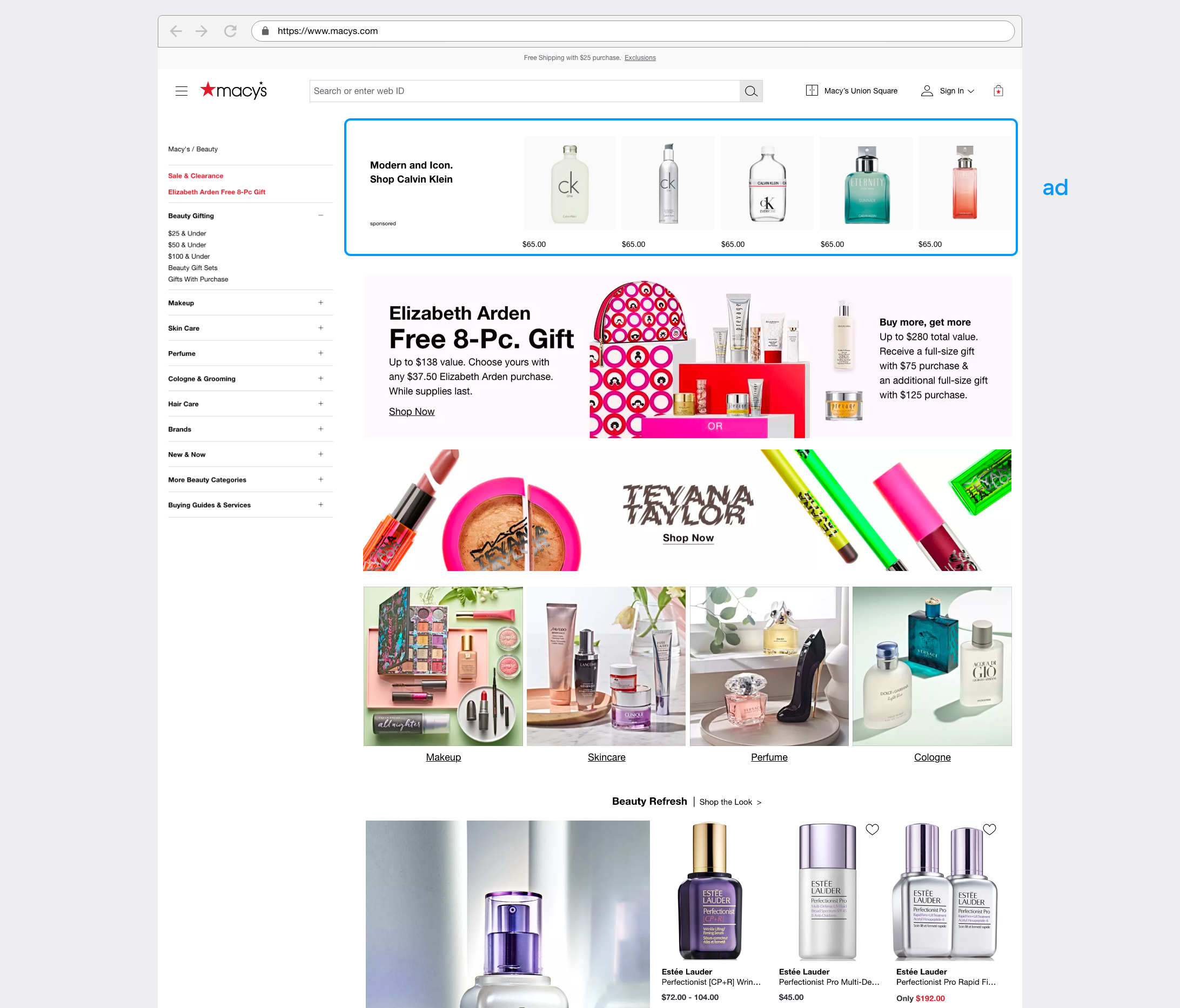
... and atypical ad formats integrated into product grids to disrupt monotony.
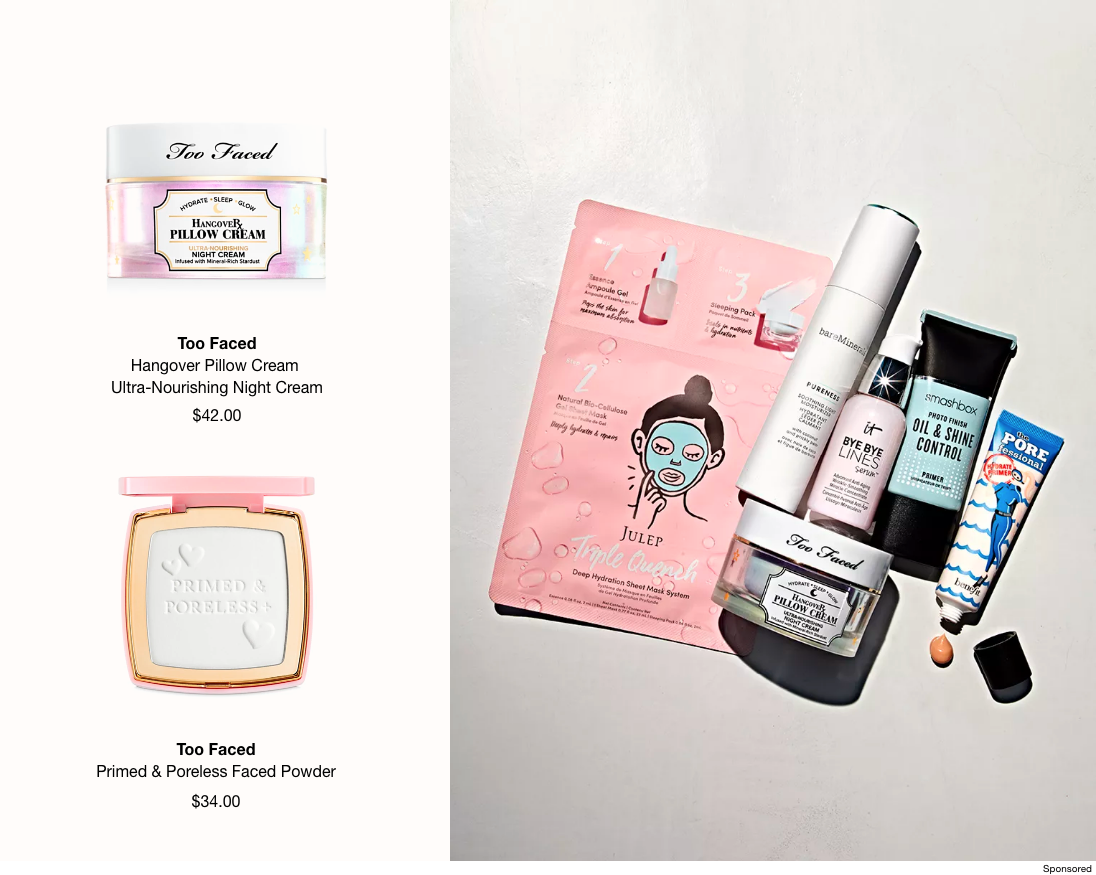
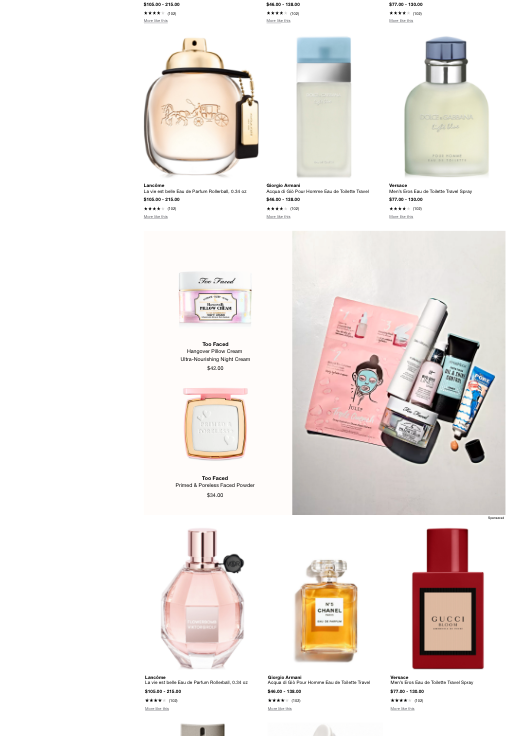
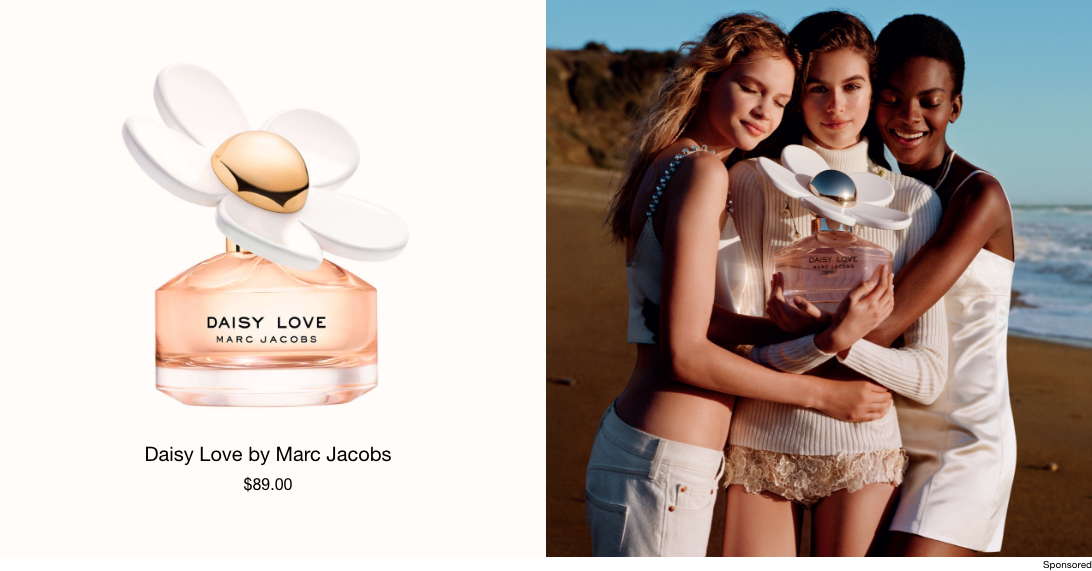
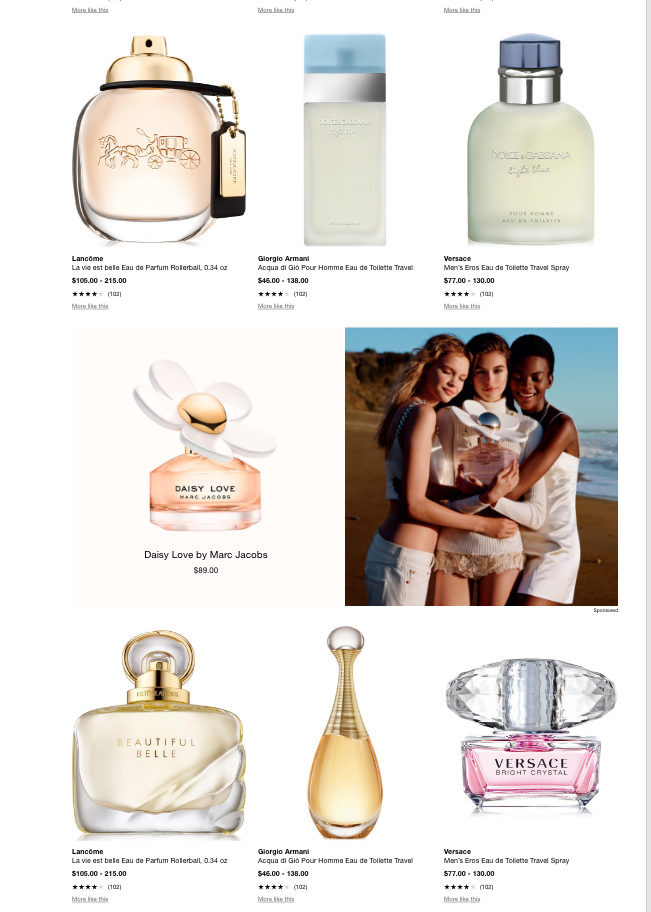
... and ads that were more educational and brand building, while still serving business purposes.
